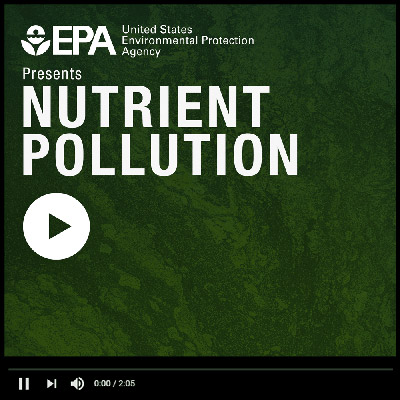Land to Water: Nutrient Explorer
Explore a sortable list of external resources on the topic of nutrient pollution, its sources, and its solutions. Nutrient pollution is broadly defined as excess nitrogen and phosphorus that are lost to waterbodies and cause water quality issues. These excess nutrients can fuel algal growth, creating a large bloom that depletes oxygen when it decomposes, such as the Gulf of Mexico “dead zone.” Illinois-Indiana Sea Grant, along with many partners across Illinois, is involved in the Illinois Nutrient Loss Reduction Strategy, which aims to reduce nitrogen and phosphorus reaching Illinois waterways by 45 percent. Click on any of the images below to learn more.
To easily find what you need, the following filters have been provided: Audience, Knowledge Level, Topic, Learning Mode, and Time Required to Complete.
Many of these resources require an internet connection. However, portions of some activities may be completed offline. Several activities and many standardized lessons may require additional supplies to fully complete. All resources categorized as standardized lessons are either already aligned or can be adapted to K-12 science standards.
This was developed with support from the Illinois EPA, Illinois Department of Agriculture, and other Illinois Nutrient Loss Reduction Strategy partners.
Filter By:
Resources
Field Trips at NGRREC
These expert-guided, in-person and virtual classroom activities and field excursions are tailored to grades 3-12 and serve as opportunities for students to connect with an expert and learn about water resources.
Audience:
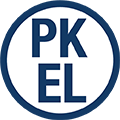


Knowledge Level:


Topic:


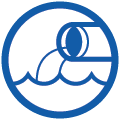
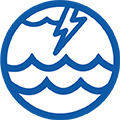
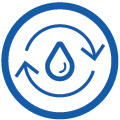



Learning Mode:


Time to Complete:



Nutrient Pollution: The Sources and Solutions: Agriculture
This summary geared toward high school and beyond discusses agricultural nitrogen and phosphorus inputs to food production systems as well as losses to waterways, highlighting several best management practices that agricultural producers use.
Audience:


Knowledge Level:

Topic:
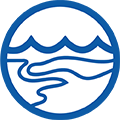



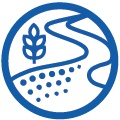
Learning Mode:


Time to Complete:


Preventing Runoff Into the Mississippi River
This short video (1:45) introduces the USDA Natural Resources Conservation Service's partnerships with agricultural producers to implement best management practices that reduce nitrogen and phosphorus runoff from agricultural lands into waterways.
Audience:


Knowledge Level:

Topic:




Learning Mode:

Time to Complete:

Nutrient Inputs
This 2-minute video provides an overview of the national nutrient pollution problem, explaining its sources and its impacts to health, environment, recreation, and tourism.
Audience:



Knowledge Level:

Topic:



Learning Mode:

Time to Complete:

The Story of Hypoxia
This infographic brochure explains the conditions that create hypoxia.
Audience:


Knowledge Level:

Topic:


Learning Mode:


Time to Complete:

What is Eutrophication?
This 1-minute video explains how nutrient runoff leads to harmful algal blooms and dead zones in coastal waters.
Audience:



Knowledge Level:

Topic:


Learning Mode:

Time to Complete:

The “dead zone” of the Gulf of Mexico, Diving the Dead Zone: Part 1, CBS This Morning – Massive dead zone in Gulf of Mexico
A TED video and two CBS features ranging 3 -18 minutes present the 'dead zone' in the northern Gulf of Mexico.
Audience:



Knowledge Level:

Topic:


Learning Mode:

Time to Complete:

National Water Quality Monitoring Council’s Water Quality Portal (WQP)
The Water Quality Portal (WQP) is the database query tool for anyone, including the public, to retrieve water monitoring data from the U.S. EPA water quality record warehouse.
Audience:


Knowledge Level:

Topic:

Learning Mode:

Time to Complete:





Nutrient Pollution: The Sources and Solutions: Stormwater
This is a summary of the nutrient pollution sources and solutions in the urban stormwater sector.
Audience:



Knowledge Level:

Topic:




Learning Mode:


Time to Complete:





A Drop’s Life
This 4-minute cartoon focuses on the fate of a raindrop in DC's combined sewer system and in DC's Clean Rivers Project storage and treatment systems.
Audience:




Knowledge Level:

Topic:



Learning Mode:

Time to Complete:

A Drop’s Life – The Sequel (Updated)
This 4-minute cartoon focuses on the fate of rain drops that encounter green infrastructure projects in DC's Clean Rivers Project.
Audience:




Knowledge Level:

Topic:



Learning Mode:

Time to Complete:

Nutrient Pollution: The Sources and Solutions: Wastewater
This summary discusses the various sources of N & P into wastewater treatment and home septic systems. It discusses the various strategies used to decrease nutrient losses into the environment.
Audience:



Knowledge Level:

Topic:




Learning Mode:


Time to Complete:





Ag in the Classroom’s selected Nutrients for Life lessons
This 5-lesson series on nutrients and soil science is designed for grades 3-5, 6-8, and 9-12 to learn about essential plant nutrients, properties of soils, plant-soil interactions, plant nutrient deficiencies, and fertilizers and the environment.
Audience:



Knowledge Level:


Topic:




Learning Mode:




Time to Complete:




Digging Into Nutrients
These two 40-minute lessons explore plant nutrient requirements as well as why and how we manage nutrients in the soil.
Audience:

Knowledge Level:

Topic:




Learning Mode:




Time to Complete:

Concentrate on the Solution
This 50-minute lesson uses a lab (ppm in solutions) to explore plant nutrient requirements and best management practices for fertilizing plants.
Audience:

Knowledge Level:

Topic:



Learning Mode:



Time to Complete:

Know Your Nitrogen
These two 60-minute lessons use a lab to teach how farmers precisely match fertilizer application to meet crop needs and reduce residual soil nitrogen.
Audience:

Knowledge Level:

Topic:




Learning Mode:



Time to Complete:

Can We Have Too Much of a Good Thing?
This lesson and lab helps students to understand that plants require proper concentrations of nutrients and that concentrations too low or too high can have damaging effects.
Audience:

Knowledge Level:

Topic:



Learning Mode:



Time to Complete:

Illinois Ag Mag: Dairy
This 4-page, colorful, ag magazine contains information and activities to help students learn about ag and ag careers. This issue focuses on dairy farming, and briefly touches on dairy farming as a nutrient source for crops and humans.
Audience:

Knowledge Level:

Topic:



Learning Mode:


Time to Complete:

Illinois Ag Mag: Pork
This 4-page, colorful, ag magazine contains information and activities to help students learn about ag and ag careers. This issue focuses on pork production, and summarizes nutrient management when using manure.
Audience:

Knowledge Level:

Topic:



Learning Mode:


Time to Complete:

Illinois Ag Mag: Corn
This 4-page, colorful, ag magazine contains information and activities to help students learn about ag and ag careers. This issue focuses on corn production, touching on fertilizer management.
Audience:

Knowledge Level:

Topic:



Learning Mode:


Time to Complete:

Illinois Ag Mag: Soil
This 4-page, colorful, ag magazine contains information and activities to help students learn about ag and ag careers. This issue focuses on soil and contains facts about nitrogen and phosphorus.
Audience:

Knowledge Level:

Topic:



Learning Mode:


Time to Complete:

Soil Reader
This classroom reader highlights why soil is important, gives a historical timeline of important soil discoveries and spotlights careers in soil management. It also contains a section on nitrogen, phosphorus, and potassium fertilizers, as well as a classroom activity for learning about soil texture.
Audience:


Knowledge Level:

Topic:



Learning Mode:



Time to Complete:


Soil Health Educators Guide
This suite of lessons, presentation materials, games, and activities will help students understand the basics of soil function, soil biology, and the nutrient and water cycles from USDA Natural Resources Conservation Service
Audience:




Knowledge Level:

Topic:



Learning Mode:





Time to Complete:





The Field Museum’s Underground Adventure
The Field Museum's Underground Adventure is an immersive exhibit where the visitors shrink to 1/100th size to experience the underground life of the soil, learning about soil function, biology, and nutrient and water cycling.
Audience:




Knowledge Level:


Topic:





Learning Mode:



Time to Complete:


Traveling Nitrogen
In this classroom activity, students play the role of nitrogen atoms traveling through the nitrogen cycle, experiencing its varied pathways and its importance to living things.
Audience:

Knowledge Level:

Topic:




Learning Mode:



Time to Complete:

Nutrients for Life Foundation Video Library
These 1- to 15-minute elementary through high school curriculum videos feature the importance of nutrients in feeding the world. It features supplemental videos about nutrient science used in various types of farming and in sports turf management.
Audience:




Knowledge Level:

Topic:




Learning Mode:

Time to Complete:

Nitrogen Cycle Challenge
This online game tests knowledge of the nitrogen cycle and explains how each part of the cycle matters to our garden and farm crops.
Audience:


Knowledge Level:


Topic:





Learning Mode:


Time to Complete:

h2know Section 4 Agricultural Research and Management Practices
These short videos, factsheets, articles, and activities with datasets explain agriculture's 4R Strategy and the continuous edge-of-field research that quantifies the impact of best management practices for reducing N & P runoff.
Audience:


Knowledge Level:



Topic:






Learning Mode:




Time to Complete:



Nutrients for Life E-Lessons
This compendium of videos, demonstrations, games, quizzes, readers, and lessons for k-continuing education are science-based resources about the vital role of fertilizer in feeding our world.
Audience:



Knowledge Level:


Topic:







Learning Mode:



Time to Complete:


h2know Section 3 Western Lake Erie Basin Watershed Dynamics
This 5-minute video discusses the basics of a topography, surface runoff, and watershed areas, then prompts the learner to think about how land uses and pollution sources impact runoff and water quality.
Audience:



Knowledge Level:

Topic:






Learning Mode:

Time to Complete:

Soil is a Filter: Annotated Video
This 2-minute video demonstrates the ability of soil to improve water quality.
Audience:




Knowledge Level:

Topic:



Learning Mode:

Time to Complete:

Soil is a Filter Lesson
This lesson and lab experiment demonstrate the abilities of soils to physically and chemically filter water pollution.
Audience:




Knowledge Level:

Topic:

Learning Mode:


Time to Complete:


Pipe-Up Game
This pdf, geared to ages 8+, features four game boards that help explain water and sewer systems and the best management practices to ensure clean water effluent.
Audience:


Knowledge Level:

Topic:



Learning Mode:

Time to Complete:

Following the Flow: An Inside Look at Wastewater Treatment
This 11-page pamphlet provides an inside look at a wastewater treatment plant. It includes photos, infographics, reading material, and a glossary.
Audience:



Knowledge Level:

Topic:





Learning Mode:

Time to Complete:


Wastewater Treatment Plant Tours
Spark interest in science and community stewardship by exploring the processes and careers at American Bottoms Wastewater Treatment Plant. Available to formal and non-formal groups ages 10+, tours teach about treating wastewater before releasing clean effluent to our waterways.
Audience:




Knowledge Level:

Topic:



Learning Mode:

Time to Complete:

Build Your Own Rain Barrel
This Stormwater Activity Sheet teaches the basics about urban stormwater runoff, water conservation, and how to build and use your own rain barrel.
Audience:


Knowledge Level:

Topic:


Learning Mode:

Time to Complete:



Reduce Runoff: Slow It Down, Spread It Out, Soak It In
This 9-minute video features urban green infrastructure practices to manage stormwater runoff in a sustainable manner by mimicking the natural water cycle to reduce flooding, protect water quality.
Audience:


Knowledge Level:

Topic:


Learning Mode:

Time to Complete:

Water Initiative
These showcased watershed projects, environmental and economic tracking tools, and policy efforts are all focused on improving water quality through agricultural best management practices.
Audience:

Knowledge Level:


Topic:



Learning Mode:



Time to Complete:




Leading Watershed Projects
These showcased projects describe agricultural best management practices that reduce nutrient inputs for food production and reduce nutrient losses to waterways.
Audience:


Knowledge Level:

Topic:




Learning Mode:


Time to Complete:


Soil Health Case Study Methods and Toolkit
These methods and tools are used for researching the economic and environmental benefits of agricultural best management practices.
Audience:

Knowledge Level:

Topic:



Learning Mode:


Time to Complete:



Soil Health Case Studies
These agricultural producer case-studies in IL and OH demonstrate the environmental and economic benefits of using best management practices to reduce nitrogen and phosphorus inputs and losses.
Audience:


Knowledge Level:

Topic:





Learning Mode:

Time to Complete:

Nitrogen Management
This overview of nitrogen management, Maximum Return to Nitrogen calculator, split nitrogen applications, N-Watch program and N-Rate Trials summarizes best management practices agricultural producers use to decrease nitrogen inputs and losses from lands to waterways.
Audience:


Knowledge Level:


Topic:


Learning Mode:


Time to Complete:


The Science of the Strategy
This video series (3 minutes each) discusses the science of the Illinois NLRS and nitrogen and phosphorus loss in specific watersheds throughout Illinois.
Audience:


Knowledge Level:


Topic:





Learning Mode:

Time to Complete:

Conservation Programs and Tools
This overview of Conservation Programs and tools used by agricultural producers throughout Illinois is helpful for understanding the range of ways agricultural producers implement and fund best management practices to reduce nitrogen and phosphorus inputs and losses from lands to waterways.
Audience:


Knowledge Level:


Topic:



Learning Mode:

Time to Complete:

What is the Nutrient Loss Reduction Strategy?
This overview of the Illinois NLRS discusses nitrogen and phosphorus runoff from agricultural lands to waterways and the need for using best management practices.
Audience:


Knowledge Level:


Topic:





Learning Mode:


Time to Complete:

How To Install A Rain Barrel
This 4-minute video provides a step-by-step demonstration of proper rain barrel installation.
Audience:

Knowledge Level:

Topic:


Learning Mode:

Time to Complete:

Carbondale Urbanized Stormwater Management Viewer
This Story Map presents a connected network of Carbondale Urbanized Area water bodies and stormwater management needs. It discusses runoff and water pollution sources and maps the area's best management practices.
Audience:


Knowledge Level:

Topic:


Learning Mode:



Time to Complete:

Carbondale Urbanized Area Stormwater Management Pamphlet
This pamphlet features best management practices that homeowners and businesses can implement to reduce stormwater runoff and improve water quality.
Audience:



Knowledge Level:

Topic:


Learning Mode:

Time to Complete:

Full Sun Rain Garden – A Native Planting Guide for Sunny Rain Garden Beds
This brochure guides homeowners and businesses in the best practices of rain garden design using native, sun-loving plants to manage stormwater runoff.
Audience:


Knowledge Level:

Topic:


Learning Mode:


Time to Complete:





Illinois Native Plants for the Home Landscape
This brochure guides homeowners and businesses in selecting native landscaping and garden plants which require less fertilizer applications and use less water.
Audience:


Knowledge Level:

Topic:


Learning Mode:


Time to Complete:





Stormwater@Home Video Series
These 2- to 6- minute episodes introduce stormwater best management practices that homeowners and businesses can install to reduce runoff and improve water quality, including rain barrels, rain gardens, permeable pavement, green roofs, and home and business property care practices.
Audience:


Knowledge Level:

Topic:


Learning Mode:

Time to Complete:

Purdue Rainscaping Education Program
This program provides training and resources in rain garden planning, installation, and maintenance for homes, businesses, and small public spaces. The format is designed as instructional and experiential professional development for Master Gardeners and for professionals in the fields of conservation, stormwater management, and landscape design.
Audience:

Knowledge Level:

Topic:



Learning Mode:





Green Infrastructure
These showcased Chicago-area green infrastructure projects are reducing stormwater runoff to combined sewer systems, reducing combined sewer overflows to local waterways, and improving water quality.
Audience:


Knowledge Level:

Topic:


Learning Mode:


Time to Complete:


Terrence J. O’Brien Water Reclamation Plant video tour
This 8-minute tour of a Chicago-area water reclamation plant highlights its functions of flood mitigation and conversion of wastewater into valuable resources such as clean water, phosphorus, biosolids, and natural gas.
Audience:


Knowledge Level:

Topic:


Learning Mode:

Time to Complete:

Natural Lawn Care
These recommendations, brochures, and guides for homeowners, landscape architects, and city planning professionals focus on residential/business/commercial stormwater best management practices for low-fertilizer input lawns and gardens, as well as drainage treatments and solutions.
Audience:


Knowledge Level:

Topic:




Learning Mode:


Time to Complete:


The County of DuPage Storm Drain Medallion Project
This pollution prevention and community stewardship program places storm drain curb markers to raise awareness of the direct connection between storm drains and our streams, rivers, and lakes.
Audience:




Knowledge Level:


Topic:


Learning Mode:


Time to Complete:

The County of DuPage Water Quality Flag Program
This pollution prevention awareness and community stewardship program incentivizes schools, business, and organizations to complete urban best management practices that promote clean stormwater runoff.
Audience:




Knowledge Level:


Topic:


Learning Mode:


Time to Complete:

The County of DuPage Green STEM: Water Dynamics Program
This professional development program for DuPage County educators tours three sites where educators learn about water quality from experts on-the-job. It concludes with hands-on training using classroom tools.
Audience:

Knowledge Level:


Topic:




Learning Mode:


Time to Complete:

The County of DuPage Living Water – REAL 695 Program
This 5-day professional development program for 3rd-12th grade teachers and non-formal educators visits sites from Lake Michigan to the DuPage River, immersing participants in man-made and natural methods used to purify, transport, store, absorb, and treat our water resources. This summer graduate-credit course is designed to facilitate STEM, NGSS-aligned classroom instruction.
Audience:

Knowledge Level:



Topic:






Learning Mode:


Time to Complete:

Water Science School
This Water Science School is designed for all ages and includes beginner, intermediate, and advanced infographics and diagrams, interactive simulations, reading material, activities, and tools to explore water data and maps. Topics include the water basics, properties, cycle, surface water, groundwater, water quality, and water use. A water cycle infographic is available in over 60 languages.
Audience:




Knowledge Level:



Topic:










Learning Mode:






Time to Complete:





What is a deadzone?
This site provides an overview of eutrophication, hypoxia, nutrient pollution, and the national programs tasked with combating hypoxia through advancing the science, detection, monitoring, prediction, and mitigation of hypoxic zones and harmful algal blooms.
Audience:


Knowledge Level:


Topic:



Learning Mode:




Time to Complete:



Gulf of Mexico Hypoxia 2
This site provides a clear, concise, well-organized display of the 1985-present long term gulf hypoxia research project. It includes research logs, datasets, analyses, conclusions, and press releases. The site provides an overview of hypoxia, and the instrumentation used in moored, transect, and shelf-wide cruise data collection. Data displays include daily logs, photo galleries, mapped and graphed data, interactive maps, and more.
Audience:


Knowledge Level:

Topic:




Learning Mode:




Time to Complete:



Mississippi River/Gulf of Mexico Hypoxia Task Force: Learn about Hypoxia in the Gulf of Mexico
This site includes an overview of hypoxia, an explanation of the Mississippi/Atchafalaya River Basin, maps and summaries of the long term gulf hypoxia research, and an overview of nutrient pollution. The history, activities, publications, and resources of the Tasks Force are also available.
Audience:


Knowledge Level:


Topic:






Learning Mode:



Time to Complete:




Articles and Activities for Middle School Students to Learn about Nonpoint Source Pollution
These lessons include 2-page articles, activities, and worksheets. Topics include water pollutants from boaters and marinas, agricultural nutrient runoff, urban stormwater and flooding, residential pollution and stormwater runoff, citizen science and stream monitoring, and watershed and stream order.
Audience:

Knowledge Level:

Topic:






Learning Mode:



Time to Complete:




Nutrient Pollution
This site discusses the problem of nitrogen and phosphorus pollution and the impacts on public health, the environment, and the economy. It summarizes individual actions that can reduce nutrient pollution to fresh and coastal waters across the U.S. It also provides an overview of all of the outreach, programs, regulations, partnerships, financing, and research that the E.P.A. is conducting to reduce nutrient pollution.
Audience:



Knowledge Level:



Topic:




Learning Mode:


Time to Complete:



Sizing Up the Lake Erie Dead Zone
This lesson explores why and how dead zones affect aquatic organisms and how human activity may contribute to the creation of dead zones. Learners use Lake Erie data to estimate size and location of a dead zone and communicate conclusions using graphs and maps.
Audience:

Knowledge Level:

Topic:




Learning Mode:


Time to Complete:

Nonpoint Source (NPS) Outreach Toolbox
This toolbox was compiled for organizations interested in educating the public on nonpoint source pollution or stormwater runoff. It provides a variety of guides, surveys, and resources for media campaigns, slogans, tv, radio, print ads, and more, to help develop an effective and targeted outreach campaign on any of six nonpoint source pollution topics: general stormwater and storm drain awareness, lawn and garden care, pet care, septic system care, motor vehicle care, and household chemicals and waste.
Audience:



Knowledge Level:


Topic:


Learning Mode:


Time to Complete:





Streamer
Use this interactive map and accompanying datasets to visualize and understand where water flows. Trace upstream and downstream from your location, generate reports on the stream characteristics and the places it passes through, and view real-time streamflow. Some locations link to the USGS National Water Information System and provide extensive historic water quality data reports.
Audience:



Knowledge Level:


Topic:




Learning Mode:


Time to Complete:




Teach Engineering STEM Curriculum for K-12: Introduction to Water Chemistry
This NGSS-aligned lesson introduces water chemistry, using the topic of maintaining unpolluted drinking water supplies. It explains sources and consequences of poor water quality and describes new and existing water remediation technologies. Available resources include instructional PowerPoint, student worksheet, and links to lab activities in chromatography, activated carbon filters, and water treatment pH.
Audience:

Knowledge Level:


Topic:





Learning Mode:



Time to Complete:


National Water Information System Mapper
This interactive map lets the user view and download historic and real-time water data from over 13,500 monitoring stations nationwide. These data include surface water streamflow, suspended sediments, and field and lab water quality parameters.
Audience:


Knowledge Level:

Topic:

Learning Mode:


Time to Complete:


Soil Water Lesson Plan
This lesson demonstrates the role of soil in water and nutrient cycling. A soil infiltration/runoff activity is used to explain infiltration, erosion, and nutrient loss. It includes a student factsheet and worksheet.
Audience:



Knowledge Level:

Topic:





Learning Mode:


Time to Complete:


The Science of Soil Health: Using Cover Crops to Soak Up Nutrients for the Next Crop
In this 3-minute interview, an agronomist in the Chesapeake Bay watershed explains how and when agricultural nutrient losses occur and how the best management practice of cover crops is used to prevent nutrient loss by soaking up nutrients to make them available for the next crop.
Audience:


Knowledge Level:

Topic:





Learning Mode:

Time to Complete:

Illinois Nutrient Research and Education Council
This organization pursues, prioritizes, funds, evaluates, and publishes nutrient research and conducts outreach through educational programs to ensure adoption of agricultural best practices to optimize nutrient efficiency, maximize crop yields, and protect water quality by minimizing nutrient loss. View their research projects and video spotlights.
Audience:


Knowledge Level:

Topic:




Learning Mode:


Time to Complete:





Erosion table for research and public engagement
This erosion table helps visualize topography, drainage, and the impacts of land management decisions on drainage runoff and soil erosion. It facilitates visualization of nutrient losses from land to water bodies. It is designed to help ag producers visualize and implement strategies to reduce nutrient losses from farms to waterways.
Audience:



Knowledge Level:


Topic:



Learning Mode:



Time to Complete:

Chicago Area Waterways Water Quality Data
This story map displays Chicago Area Waterways water quality data including fish populations, dissolved oxygen, and other chemical and biological water quality parameters.
Audience:


Knowledge Level:

Topic:

Learning Mode:


Time to Complete:


How the MWRD Protects Water Quality
This brief history and pictorial overview of water quality monitoring and treatment processes explains how the MWRD protects the Chicago Area Waterways.
Audience:



Knowledge Level:

Topic:




Learning Mode:


Time to Complete:

Nutrients recovered by MWRD lead to new resources and cleaner environment for the Mississippi River Basin and Gulf of Mexico
This press release covers the world's largest nutrient recovery facility located in Cicero, Illinois.
Audience:



Knowledge Level:

Topic:




Learning Mode:

Time to Complete:

Chicago Area Waterways Water Quality Monitoring
These data for the Chicago Area Waterways include habitat, sediment, invertebrate, and fish metrics as well as many other biological and chemical water quality parameters. The site includes waterways maps, reports, and data archives.
Audience:


Knowledge Level:


Topic:

Learning Mode:




Time to Complete:





Aqua Water Quality
This database provides annual drinking water quality reports, or Consumer Confidence Reports (CCRs), for customers served by Aqua America.
Audience:


Knowledge Level:

Topic:

Learning Mode:


Time to Complete:


Understanding Your Sewer
These descriptions and infographics provide an overview of the Chicago Area sewer system, explain the differences between separate and combined systems, and discuss ways to prevent backups.
Audience:



Knowledge Level:


Topic:



Learning Mode:


Time to Complete:

Recovering Resources, Transforming Water
This brief overview of MWRD's Resource Recovery programs describes the collection of municipal, industrial, trade, agricultural, and other commercial wastes used to produce composted biosolids and renewable energy (biogas). It describes the reduction of nutrient losses into our waterways.
Audience:


Knowledge Level:

Topic:





Learning Mode:

Time to Complete:

Farming for Ecosystem Services
This standardized lesson for grades 6-12 lets students explore ecosystem services and farming in 50 minutes.
Audience:


Knowledge Level:

Topic:

Learning Mode:

Time to Complete:

How’s My Waterway?
This database and accompanying factsheet allow the user to explore water quality by location.
Audience:

Knowledge Level:

Topic:

Learning Mode:



Time to Complete:

IDNR Conservation CREP Nutrient Loss Reduction Strategy
This site provides a summary of Illinois NLRS and of the tracking and reporting of agricultural best management practices in Illinois. It highlights IDNR's Conservation Reserve Enhancement Program used to protect and restore riparian corridors to reduce nutrient runoff from non-point sources.
Audience:


Knowledge Level:

Topic:





Learning Mode:



Time to Complete:

Smart Wetlands
This organization facilitates wetland implementation to reduce nutrient loss from tile-drained cropland in central Illinois.
Audience:

Knowledge Level:

Topic:


Learning Mode:



Time to Complete:

Improving Old MacDonald’s Farm: Protecting streams from “fruited plains”
This farm article, intended for middle school students, introduces Gulf Hypoxia, discusses animal waste runoff and water pollution, and explores best management solutions.
Audience:

Knowledge Level:

Topic:



Learning Mode:

Time to Complete:

Illinois Nutrient Loss Reduction Podcast
These 10- to 30-minute podcast episodes explore a variety of Illinois NLRS ag-related topics.
Audience:


Knowledge Level:

Topic:


Learning Mode:

Time to Complete:

Illinois Nutrient Research and Education Council Videos
These videos range from short, 1-minute clips to hour-plus webinars featuring nutrient reduction research and agricultural best management practices.
Audience:


Knowledge Level:


Topic:



Learning Mode:

Time to Complete:



Solutions to minimize phosphorus loss through subsurface tile drains
This factsheet explains how and why phosphorus is lost through tile drainage and best management options to reduce phosphorus movement from fields.
Audience:



Knowledge Level:

Topic:




Learning Mode:

Time to Complete:

Soil Fertility
This basic information about crops and soil fertility touches on nutrient deficiencies affecting plant growth. It explains soil tests and nutrient management.
Knowledge Level:

Topic:


Learning Mode:

Time to Complete:

Soy Sources for Educators
These lesson plans, videos, factsheets, and activities provide an overview of soybean production and use, including information on the pod-to-plate process, history, equipment, science, production statistics, and careers.
Audience:




Knowledge Level:


Topic:


Learning Mode:




Time to Complete:




Pod to Plate, Read Aloud by Betsey Emerick
This 5-minute video features a read-aloud storybook "Pod to Plate: The Life Cycle of Soybeans."
Audience:




Knowledge Level:

Topic:


Learning Mode:

Time to Complete:

Illinois Nutrient Loss Reduction Strategy Biennial Reports
The Illinois NLRS Biennial Reports document the continued progress being made in Illinois to reduce nutrient losses from multiple sources to improve water quality in Illinois waterways, the Mississippi River, and the Gulf of Mexico.
Audience:

Knowledge Level:

Topic:












Learning Mode:

Time to Complete:


Flood Prevention 101
These tips describe ways to prevent home flooding and sewer backups during rainstorms. Tips include information on home landscaping and green infrastructure. The page describes how the MWRD's deep tunnel system is designed to reduce flooding, sewer overflows, and water pollution.
Audience:



Knowledge Level:

Topic:


Learning Mode:


Time to Complete:

The Cycle of Stormwater
This pdf infographic shows how rainwater drains to our waterways and lists some of the pollutants that can be carried in runoff.
Audience:

Knowledge Level:

Topic:



Learning Mode:

Time to Complete:

EPA: The Scoop on Stormwater
This 2-minute video describes how stormwater drains, how it can carry pollutants to our waterways, and ways green infrastructure can reduce water pollution.
Audience:



Knowledge Level:

Topic:



Learning Mode:

Time to Complete:

EPA Lawn Care Tips: Controlling water runoff
This 2-minute video highlights ways that homeowners can control water runoff and take care of lawns and gardens.
Audience:



Knowledge Level:

Topic:


Learning Mode:

Time to Complete:

Careers in Water
These career path profiles provide descriptions for water and water resources recovery jobs. Each profile links to a database that helps users search the U.S. and Canada to learn about local educational, training, and certification requirements, as well as scholarships and local resources available to launch careers.
Audience:


Knowledge Level:

Topic:

Learning Mode:



Time to Complete:




EPA WaterSense for Kids: A Day in the Life of a Drop
This is a compilation of online interactives, including a quiz, student worksheets, and a dataset to help students. Topics covered are water sources, uses, environment and human health effects, pollutant pathways, and individual stewardship.
Audience:

Knowledge Level:

Topic:


Learning Mode:



Time to Complete:




Stormwater Walk
This activity lets students grade their school or home based on its stormwater infrastructure.
Audience:


Knowledge Level:

Topic:

Learning Mode:

Time to Complete:


How Much Water Runs Off?
This activity lets elementary and middle school students use a rain gauge to calculate how much water runs off their school or home.
Audience:


Knowledge Level:

Topic:

Learning Mode:

Time to Complete:


H2Know
This interactive site lets high schoolers and the public learn about harmful algal blooms in Lake Erie.
Audience:


Knowledge Level:

Topic:






Learning Mode:


Time to Complete:




To Drink or Not to Drink
This activity for elementary and middle school explains how towns and cities treat water for drinking.
Audience:


Knowledge Level:

Topic:

Learning Mode:

Time to Complete:


From the Field: Wastewater Treatment Plant Upgrades
This 5-minute video explains the importance of upgrades to wastewater treatment plants in the Chesapeake Bay.
Audience:

Knowledge Level:

Topic:


Learning Mode:

Time to Complete:

Internship Programs
This high school and college internship program provides hands-on experience in the point source sector at the American Bottoms Wastewater Treatment Facility in East St. Louis.
Audience:


Knowledge Level:

Topic:


Learning Mode:

Time to Complete:


A Healthy Waterway Begins with You
This reading material for the public provides background on water quality and tips for protecting our waterways.
Audience:

Knowledge Level:

Topic:



Learning Mode:

Time to Complete:


IWEA Committees: Students and Young Professionals
This reading material provides information on the opportunities for students and young professionals interested in careers in water quality.
Audience:

Knowledge Level:

Topic:

Learning Mode:

Time to Complete:

Water Palooza
This collection of simple, hands-on activities for elementary school will help to educate children about water.
Audience:

Knowledge Level:

Topic:







Learning Mode:

Time to Complete:



The Dirty Water Project
This activity lets elementary and middle school students test different methods - aeration and filtering - for removing pollutants from water. Working in teams, they design, build, and test their own water filters - essentially conducting their own "dirty water projects."
Audience:


Knowledge Level:

Topic:

Learning Mode:

Time to Complete:

Wad-O-Watershed
This activity shows students how we can work together to protect the quality and quantity of water for our use.
Audience:


Knowledge Level:

Topic:

Learning Mode:

Time to Complete:

Illinois Ag in the Classroom Watersheds
This 2-minute video provides an introduction to watersheds.
Audience:


Knowledge Level:

Topic:

Learning Mode:

Time to Complete:

Ness’ Watershed Detective Agency: A Water Quality Activity Book
This activity book for elementary school students teaches about watersheds and water quality.
Audience:

Knowledge Level:

Topic:

Learning Mode:

Time to Complete:



Illinois Ag Mag: Water
This magazine highlights the importance of water, including watersheds, the water cycle, and water careers.
Audience:


Knowledge Level:

Topic:




Time to Complete:


Office of Water Prediction
This dataset/visualization tool lets students explore waterways in the U.S.
Audience:



Knowledge Level:

Topic:


Give Water a Hand
This activity and guide gives youth the resources they need to solve real water problems in their own communities. Provides success stories, guides, and step-by-step instructions.
Audience:


Knowledge Level:

Topic:





Learning Mode:

Time to Complete:




Water Quality by Topic
This dataset provides information on water quality by various topics, such as pollutant type, sources, uses, and properties of water.
Audience:


Knowledge Level:

Topic:

Learning Mode:

Time to Complete:


Lawn to Lake Guidebook
This guidebook provides information for homeowners to make decisions regarding lawncare.
Audience:

Knowledge Level:

Topic:


Learning Mode:

Time to Complete:



Soil Health Producer Profiles
This site highlights 14 agriculture producers who use cover crops and soil management. The producer profiles share how they are “Unlocking the Secrets in the Soil."
Audience:

Knowledge Level:

Topic:



Learning Mode:

Time to Complete:



Conservation Drainage
This reading material highlights the conservation drainage BMPs for agriculture.
Audience:

Knowledge Level:

Topic:



Learning Mode:

Time to Complete:



Source Water Assessment Program Factsheets
This database lets users look up their source water quality by community.
Audience:

Knowledge Level:

Topic:

Learning Mode:


Time to Complete:

A River Runs Through It – Earth Science GeoInquiries CF
This collection of 15 web-mapping activities use ArcGIS Online to teach watershed concepts. The activities use a standard inquiry-based instructional model, are NGSS-aligned, require only 15 minutes for a teacher to deliver, and are device agnostic.
Audience:

Knowledge Level:

Topic:


Learning Mode:


Time to Complete:

What is the Water Cycle?
This standardized lesson teaches students about the water cycle.
Audience:

Knowledge Level:

Topic:

Learning Mode:

Time to Complete:

Ravine Education Program
This curriculum guide for grades 4-8 features activities, lessons, and materials for teaching about ravines.
Audience:


Knowledge Level:

Topic:

Learning Mode:


Time to Complete:




Suffocating Waters
This article geared towards high schoolers provides an introduction to hypoxic zones, what causes them, and how to improve them.
Audience:

Knowledge Level:

Topic:




Learning Mode:

Time to Complete:

Mississippi River Webcam
This webcam provides a live view of the Mississippi River from the top of the River Museum's National River Center.
Audience:




Knowledge Level:

Topic:

Learning Mode:

Time to Complete:




Mapping U.S. Watersheds
This standardized lesson for grades 3-6 has students identify U.S. watersheds and map the Mississippi River and its major tributaries.
Audience:


Knowledge Level:

Topic:



Learning Mode:

Time to Complete:

Understanding Your Sewer
This illustrated brochure provides an overview of the connection between our home, business, or industry sewer drains and a wastewater treatment facility. It also provides an overview of the combined sewer-stormwater systems in the Chicago area and explains how they operate during rainstorms.
Audience:


Knowledge Level:

Topic:



Learning Mode:


Time to Complete:


This American Land: Farming Upstream
These pictures and descriptions offer static tours of the biological and physical-chemical steps used to treat municipal and industrial wastewater resulting in clean effluent discharge to the Mississippi River.
Audience:



Knowledge Level:

Topic:



Learning Mode:

Time to Complete:


National Water Quality Information System
The USGS collects and analyzes chemical, physical, and biological properties of water, sediment and tissue samples from across the Nation. Download historic data or visit the National Water Dashboard to view and use real-time water quantity and quality data.
Audience:


Knowledge Level:

Topic:

Learning Mode:


Time to Complete:




Great Lakes To Gulf Data Stories and Virtual Observatory
These visual NLRS data stories and the interactive geostreaming map application allow users to explore and compare water quality monitoring data aggregated from multiple sources that monitor the Mississippi River and its tributaries. Users can select sites, graph specific parameters, and download water quality data.
Audience:


Knowledge Level:

Topic:












Learning Mode:




Time to Complete:




Facility and Virtual Tours
MWRD staff give education and outreach presentations to all ages about how they treat wastewater, manage stormwater, and improve water quality throughout the region.
Audience:


Knowledge Level:


Topic:




Learning Mode:


Time to Complete:

The National Great Rivers Research and Education Center
This hub of research, education and outreach programming for k-college, public and Educator Profssional Development audiences, specializes in big river ecology and offers education programs and activities aimed at sustaining high quality water resources.
Audience:




Knowledge Level:



Topic:








Learning Mode:


Time to Complete:



No Items Found
There are no items that could be found to match this criteria.

